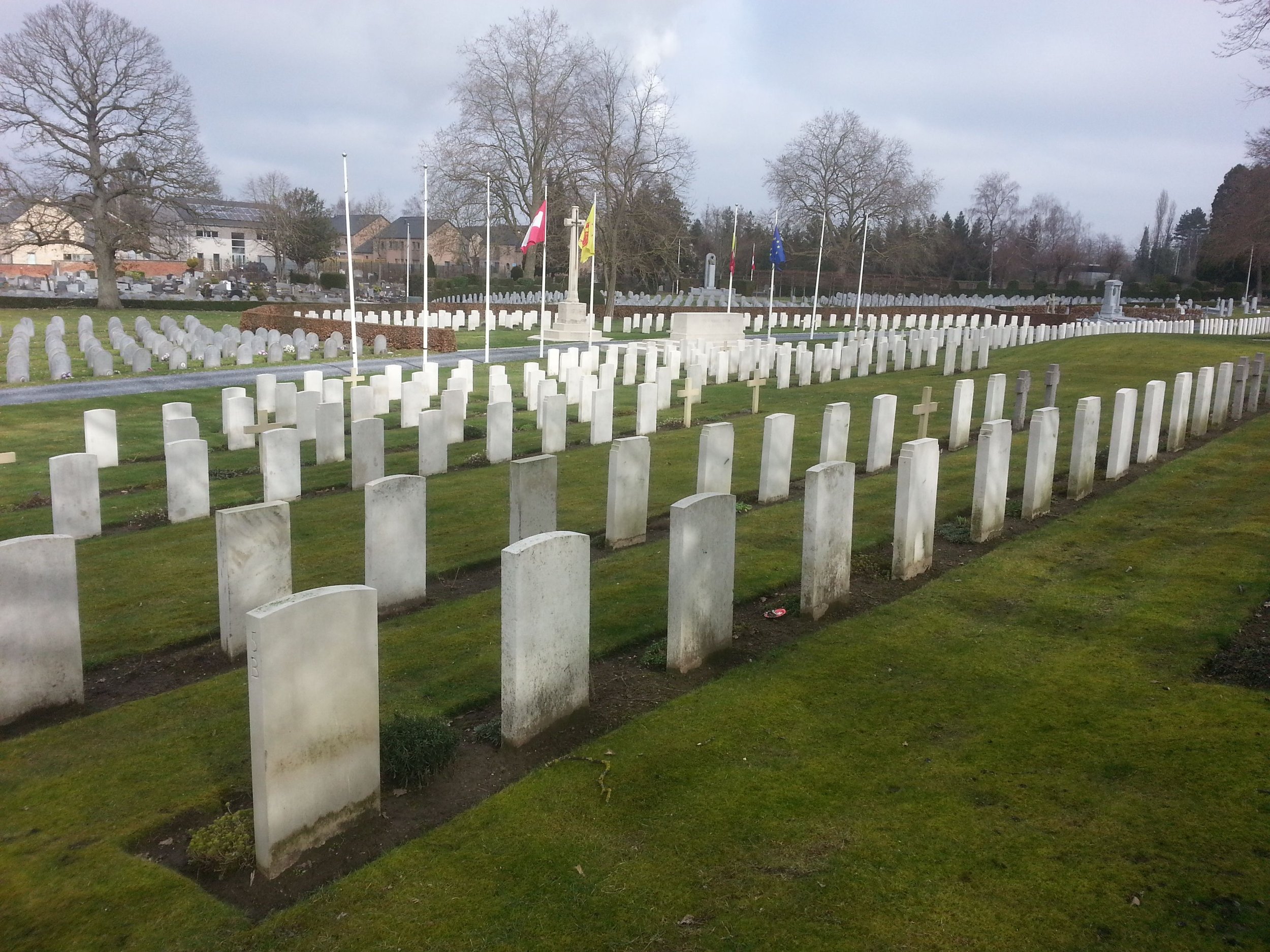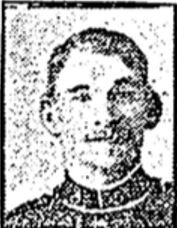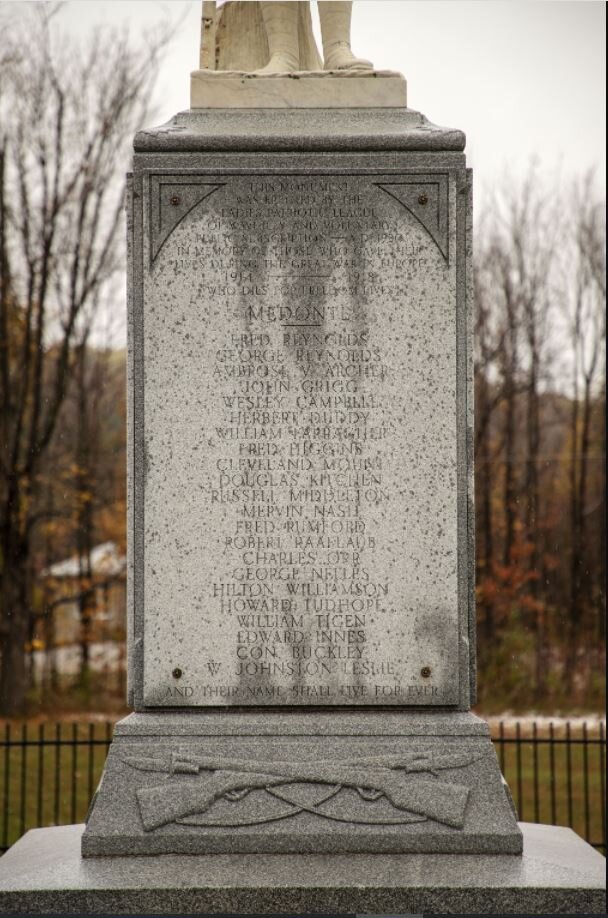Corporal Orren John Congdon
116th Battalion CEF
745344
Born: 1893, Uxbridge, ON
Lived in Atherley, ON
Killed in Action – Raid at Avion, Fosse 4 July 23, 1917
Divisional Headquarters – Camblain D’Abbe
It was time.
They found an empty room in the building and set down to conduct the solemn task. ‘They’ consisted of only three individuals: the Commanding Officer of the battalion, his Adjutant and his assistant. It was time. The CO sat himself down on one of the chairs placing his cap on the desk occupying the centre of the room. To the side was another small desk with a typewriter placed upon it. The Adjutant’s Assistant sat behind it and readied a short stack of paper. The Adjutant proceeded to open a couple of windows enabling the smoke from their cigarettes to intermix with the breeze of fresh air that wafted in, also helping cool down the overheated room. Summers in France can be like that. The Adjutant then proceeded to reach into his satchel and remove a well-worn package bound in leather. Leafing through the pages contained withing, he searched for and retrieved a document. It was the list.
The Commanding Officer in question was Samuel Simpson Sharpe, the Lieutenant Colonel in command of the 116th Ontario County Battalion. It was early August in the year 1917 and his battalion was enjoying their well deserved and needed rest away from the front line. A little over a week or so, late in the evening of July 22nd the CO could be found wandering around no mans’ land near Avion. He was trying to locate his men as they prepared for the battalion’s first real test of combat in the war. Walking from platoon to platoon in the pitch black darkness, scuttling from jumping off zone to jumping off zone, he sought to check, recheck and check again that his men were ready to respond the call of the whistle. While out there, he rearranged some of the tapes that were placed along the trench lines, guidelines installed to direct the men towards their objectives. In his mind, Sharpe had to be 100 percent certain that his men were not only just prepared to achieve the objectives assigned to them but that they were given the best chance to make it back safely. And yet despite his direct efforts, with one leg resting over the other, a freshly lit cigar awaiting his attention, he sat back, reflexively placed his hands on his face, gently rubbing his eyes, looked towards the assistant listening attentively nearby behind his typewriter and began…
“It is my painful duty that your son Cpl O J Congdon has been missing since and attack on German positions on the morning of July 23rd.”
The letter was being written to the mother and father of one of Sharpe’s NCOs, Corporal Orren John Congdon. Orren was 23 yr of age and like many of the friends and neighbours of his age, when Sharpe sent a Lieutenant into his town to persuade local men to join the war effort, he responded, and on the 8th of November 1915 he put pen to paper and joined the new unit. Born in Uxbridge to John and Annette, the family moved to a farm in the town of Atherley situated just outside the city of Orillia. Congdon, was the eldest son in a family of five, with two younger sisters, Ida and Ruby.
Sharpe started the letter by describing the circumstances which lead to the tragic news he was delivering, that their son, Orren was counted amongst the missing and presumed dead in the attack that took place early in the morning of July 23rd, 1917.
He continued…”The battalion had received a special order to raid the German lines on a frontage of 600 yards to a depth of 400 yards. There were two objectives and “A” Company under Captain Gould took the first objective and captured many prisoners. The other objective was taken by “B” and “C” companies under Capt. Allen and Major Currie respectively. They reached their objectives and inflicted much loss on the enemy, bombed his dugouts and took many prisoners. On the whole we captured about sixty prisoners and the Battalion received complimentary messages from the Brigadier, the Divisional Commander and Corps Commander and the Commander-in-Chief, but these messages, I am afraid, offer small consolation to the fathers and mothers and relatives of those who has fallen, or who are missing. It was with exceeding regret that your son was among the missing.“
The content and composition of this letter provides compelling insights into the mindset of Sharpe as he sat in that room, dictating letters to the Assistant Adjutant and crossing off names on a list. How he approached these letters and the messaging he used reveals so much about the man. He was and wanted to be known as an officer commanding a battalion in war, but at the same time he was still a man of the people. As a politician, he was interested in people, in their struggles and challenges. He had a desire and drive to connect with them on a base level, to empathize with the issues they were passionate about and try as he may, to help them wherever he could. In his opening paragraph, Sharpe looked to provide some context, meaning and value to the sacrifice of a son to the war. He wanted the parents and siblings of Orren to know he did not die for nothing. However, he also wanted them to know he was valued and appreciated, both by the men in the battalion but more importantly, by him personally…as his leader and commanding officer.
He did this by trying to relay, as best he could, what the battalion’s orders were and how Orren may have been killed. While providing some details and hints on the operations conducted that night, it does remain incomplete. Orren was a member of B Company. On that particular evening B Company was under the command of Capt. Allen. A Company initiated the raid by rushing forth at the sound of the whistle and taking the front-line German trench called Metal Trench (see accompanying diagram of raid). This trench was situated along the front of a huge slag heap (consisting of the detritus of mining operations). Once the initial objective was complete by A Company, B and C Company was directed to rush forth, move to the sides and rear of the slag heap and attack the Germans protecting the Railway Embankment in the rear. It was somewhere out beyond the sight of Battalion leadership where Congdon was killed.
Sharpe then vectored to speak to the value of Orren as a soldier and as a contributing member of the battalion as a whole. It was here where to sought to connect with the parents of the slain man and share in his unfortunate loss.
“Orren was always bright and cheerful and was always an encouragement to the other men. He was never out of sorts but always cheerful under the most adverse conditions. Although he is marked missing, I cannot hold out any hope that he is alive. He was in a platoon with a son of a cousin of mine, Lieut Lennox who is a fine boy also. They are missing together. I have only one message for you, namely, that I am afraid they are both killed but there is a possibility that they have been wounded and are prisoners, but I am afraid that we shall never see the boys again.
Orren carried on in a manner that reflected great credit to him and on the unit to which he belonged. He was popular in the battalion and his loss will be keenly felt. On behalf of the officers, non-commissioned officers and men of the battalion I desire to convey to you our sincere sympathy in your loss. Please convey to all members and friends of the family our regret at the loss of such a splendid soldier. We hope that you will take comfort and solace in the consciousness that if he has died, he did in full duty to his King and country, and his loss will be an inspiration to those who come after.”
The letter written by Sharpe is a wonderful demonstration of an officer showing that he truly cared for the men under his leadership. He wanted to show that he equally shared in the feeling of loss they were now experiencing. He even went so far to personalize the letter and even revealed that he not only lost his own nephew in the raid but that Orren may have been by his side when he was killed.
Placing ourselves in the boots of men like Lt. Col Sharpe, we can look back to the room where he dictated these letters to the assistant. Or better yet we can place ourselves behind that typewriter, and be the assistant listening to a man empathizing, over and over again with the families of slain men. One by one, as the letters were being composed and the pages piled atop one another we would get to see the progressive impact that the war was having on him. With each letter, he re-experienced the circumstances of their death, reminding him of the unrelenting brutality of war, and then he would remind himself of the individual and how they contributed to the battalion before ultimately express his own feeling of loss. With each soldier Sharpe made every effort to personally thank the families for the sacrifice of their son, or brother or husband and share in their feeling of sorrow and loss. This is a part of war…and a part of every war but for Lt Col Sam Sharpe in particular, with the growing number of men dying under his personal command and considering the intimate treatment he used in the correspondence sent to their next of kin, his own ability to continue eroded with every letter written.
The family of Orren John Congdon was gracious enough to share the letter written to them by Sharpe with a local newspaper. Thankfully for the posterity of the battalion, for Orren and for Sharpe himself, the survival of this letter enables us to better understand the nature of this lost soldier and the man who commanded him. Remember him.














































































